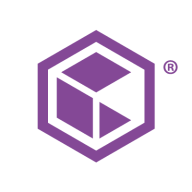

Commvault Cloud and IBM Storage Protect compete in the data management and protection domain. Commvault Cloud tends to have an advantage due to its pricing and customer support, while IBM Storage Protect excels in feature offerings.
Features: Commvault Cloud offers scalability, advanced analytics, and efficient customer service. IBM Storage Protect provides robust security, comprehensive platform coverage, and extensive feature sets.
Ease of Deployment and Customer Service: Commvault Cloud provides an easy deployment process and proactive customer service. IBM Storage Protect, while providing detailed documentation and skilled support, comes with a complex installation process.
Pricing and ROI: Commvault Cloud offers lower initial setup costs and flexible pricing for quick ROI. IBM Storage Protect requires higher upfront investment, justified by its extensive features, offering long-term value.
| Product | Market Share (%) |
|---|---|
| Commvault Cloud | 6.0% |
| IBM Storage Protect | 2.1% |
| Other | 91.9% |


| Company Size | Count |
|---|---|
| Small Business | 57 |
| Midsize Enterprise | 24 |
| Large Enterprise | 81 |
| Company Size | Count |
|---|---|
| Small Business | 53 |
| Midsize Enterprise | 25 |
| Large Enterprise | 94 |
Commvault Cloud is the ultimate cyber resilience platform built to meet the demands of the hybrid
enterprise. Beyond its core functionality of data backup and recovery across diverse workloads, including applications, databases, virtual machines, and files, Commvault Cloud stands out as a robust defense against ransomware. Going beyond backup, the platform integrates advanced data security features such as encryption, access control, and threat detection, safeguarding against unauthorized access and cyber threats.
With tools for data management, classification, and migration, businesses can optimize storage costs, enhance accessibility, and comply with regulations seamlessly. Boasting cloud integration with major providers like AWS, Azure, and Google Cloud, Commvault Cloud leverages the scalability and flexibility of the cloud for comprehensive data protection and management. The platform's automation capabilities streamline tasks, and its reporting and analytics features provide valuable insights into data usage, potential risks, and optimization strategies. Commvault Cloud is not just a security tool; it is a key component of cyber resilience, enabling organizations to not only protect against cyberattacks but also recover swiftly and minimize the impact of incidents. Elevate your cyber resilience strategy with Commvault Cloud.
IBM Storage Protect offers data protection and management to secure critical business information efficiently. It's designed to be a scalable and flexible solution for data backup, recovery, and archive needs in complex IT environments.
IBM Storage Protect delivers comprehensive data protection by integrating backup, recovery, and archiving functionalities. It supports a range of workloads and infrastructures, from on-premises to cloud environments, facilitating efficient data management. Its platform provides seamless scalability to meet evolving business needs, underpinned by reliable security measures. Organizations leverage its capabilities to ensure business continuity and minimize data loss risks, making it vital in a data-driven world.
What are the key features of IBM Storage Protect?Industries like finance and healthcare implement IBM Storage Protect to safeguard sensitive information against threats. In financial services, it's crucial for maintaining client data confidentiality, while healthcare institutions use it to protect patient records, ensuring both accessibility and compliance with regulations.
We monitor all Backup and Recovery reviews to prevent fraudulent reviews and keep review quality high. We do not post reviews by company employees or direct competitors. We validate each review for authenticity via cross-reference with LinkedIn, and personal follow-up with the reviewer when necessary.